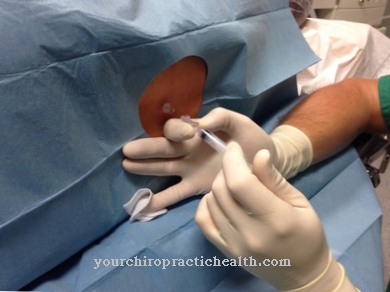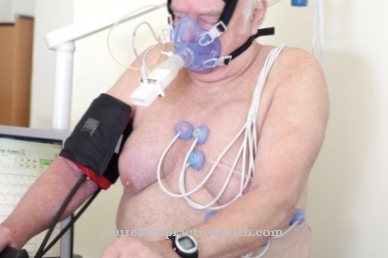In our day and age, stress and tension are the order of the day. Often it happens involuntarily that muscles in the body tense without our noticing. The American doctor and physiologist Edmund Jacobson first recognized the connections between chronic muscle tension and most diseases at the end of the 19th century. This later became the Progressive Muscle Relaxation, often called Jacobson's progressive muscle relaxation.
What is progressive muscle relaxation?

The Progressive Muscle Relaxation, also called progressive muscle relaxation, is a procedure that by consciously tensing and then relaxing certain muscle groups one after the other brings about deep relaxation in the body.
Jacobson had recognized that not only mental tension lead to physical tension, but also recognized and demonstrated that it also works the other way round, that relaxed muscles contribute to mental relaxation.
With progressive muscle relaxation, he developed a procedure that is one of the most important relaxation methods today and is easy to learn.
Function, effect & goals
The Progressive Muscle Relaxation according to Jacobson is one of the best known methods to prevent and reduce stress.In addition, this procedure sensitizes the body to perceive tension more quickly and to counteract it.
Progressive muscle relaxation is used wherever it is a matter of relieving stress symptoms. It is often used as part of behavioral therapy or pain therapy.
With progressive muscle relaxation (PME), u. a. treat or alleviate the following conditions:
- General symptoms of stress
- Muscle tension
- Headache migraine
- Back pain
- high blood pressure
- Gastrointestinal problems
- sleep disorders
- various fears (fear of flying, fear of exams, phobias, anxiety disorders in general)
Progressive muscle relaxation is also used in childbirth preparation, as well as in the case of night-time teeth grinding, which can cause painful jaw problems, stuttering, in principle all health problems in which stress plays a role.
The principle of progressive muscle relaxation is easy to learn and is offered as a course at most adult education centers. First certain muscle groups are tensed, the tension is then held for a short moment and then relaxed again. The tension before relaxation allows the body to better feel the beneficial effects of relaxation. One after the other, 16 muscle groups are first tensed and then relaxed again.
The exercises can be performed either lying down or sitting. The more intensely the muscle groups were previously tensed, the more noticeable the relaxation afterwards. If you do the exercises regularly, you develop a special feeling for the interplay between tension and relaxation. Regular practice is important for success. Some health insurances already cover the costs for courses.
The primary goal of progressive muscle relaxation is preventive health care of all kinds. It aims to ensure that the body is able to develop a balance between tension and relaxation and greater serenity. Regular exercises strengthen the well-being and lead to a more sensitive body awareness, so that stress-related tension can be better recognized and remedial action can be taken in good time.
In addition, the exercises improve the ability to concentrate. The progressive muscle relaxation gives the practitioner the feeling of being able to relieve stress and tension and to do something of their own accord for health care.
You can find your medication here
➔ Medicines to calm down and strengthen nervesRisks, side effects & dangers
Even if the Progressive Muscle Relaxation Jacobson says it is a great and easy-to-learn relaxation method to reduce stress, but it cannot be recommended to everyone without reservation.
Caution should be exercised in people who suffer from heart problems, uncontrollable high blood pressure, psychosis or nerve disorders. Even with people who are compulsive, hypochondriac or paranoid, the method can do the opposite of what is actually intended. Hypochondriacal people listen to themselves anyway, so the progressive muscle relaxation would be counterproductive.
Particular caution is also required with anxiety. In general, it helps very well with headaches, but it should be used with caution in severe migraines. Sensitive people can have blood pressure drop or hyperventilate. Existing asthma may worsen during the exercise.

























.jpg)

.jpg)
